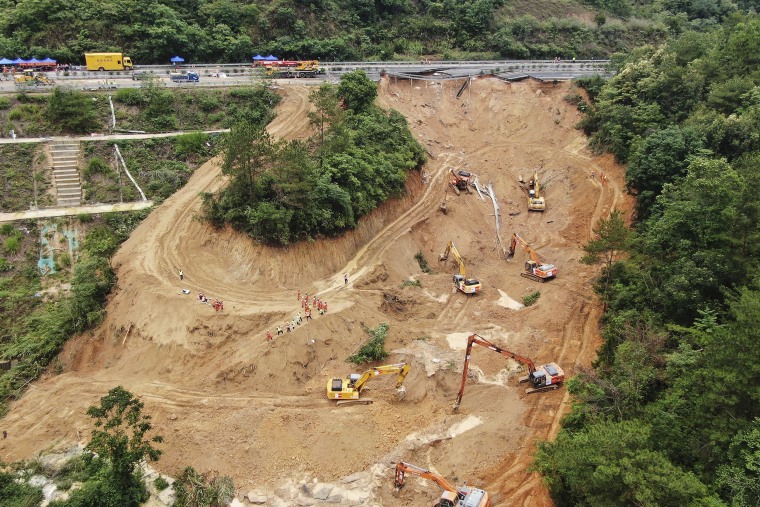BEIJING — The death toll climbed to 48 on Thursday as search efforts continued in southeastern China after a highway section collapsed in a mountainous area, sending more than 20 cars down a steep slope.
Officials in the city of Meizhou said three other people were unidentified, pending DNA testing. It was not immediately clear if they had died, which would bring the death toll to 51. An additional 30 people had non-life-threatening injuries.
The collapse happened about 2 a.m. on Wednesday (2 p.m. Tuesday ET) after a month of heavy rains in a mountainous part of Guangdong province. Vehicles fell down the slope and sent up flames as they caught fire.
The search was still ongoing, Meizhou Mayor Wang Hui said at a news conference. No foreigners have been found among the victims, he said.

Search work has been hampered by rain and land and gravel sliding down the slope. The disaster left a curving earth-colored gash in the otherwise verdant forest landscape.
“Because some of the vehicles involved caught fire, the difficulty of the rescue operation has increased,” said Wen Yongdeng, the Communist Party secretary for the Meizhou emergency management bureau.
“Most of the vehicles were buried in soil during the collapse process, with a large volume of soil covering them,” he said.
He added that the prolonged heavy rainfall has saturated soil in the area, “making it prone to secondary disasters during the rescue process.”